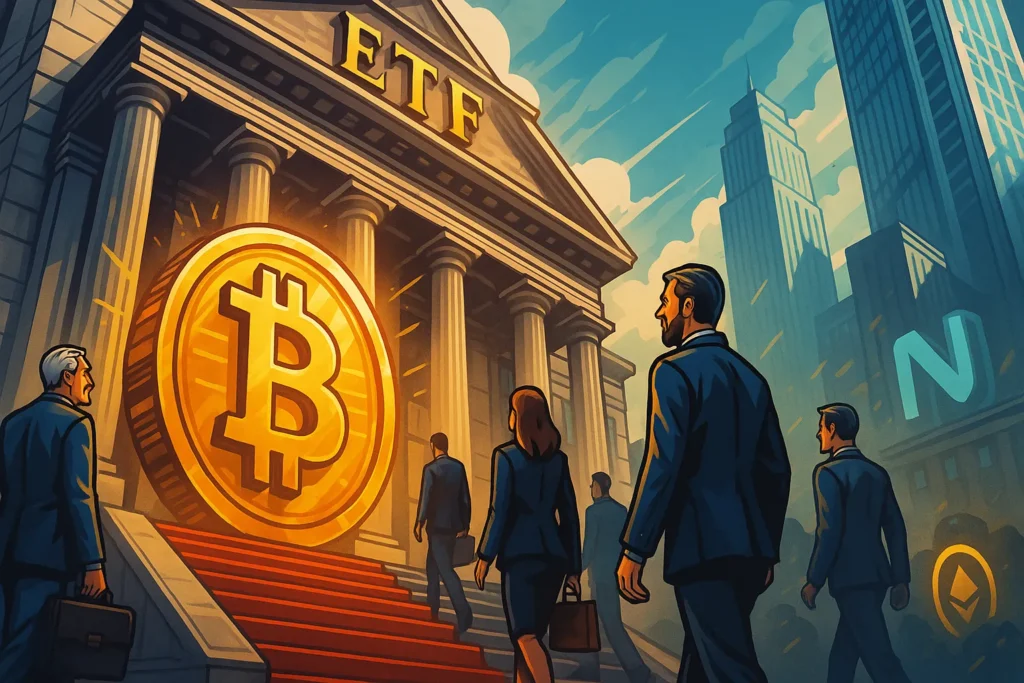Spot Bitcoin ETF launches which has opened the door for altcoin ETFs. Bitwise’s recent filing for a NEAR ETF is a large step in that direction. We see this as an effort to give investors access to NEAR Protocol through the use of traditional financial tools. The filing comes after Bitwise put in place a Delaware statutory trust for the NEAR ETF in late April. This plays into the increasing interest in regulated crypto investment options, alongside the broader acceptance of Bitcoin ETFs.
Key Information from the Bitwise NEAR ETF filing.
Proposed ETF will hold real NEAR tokens. This setup gives investors direct price exposure without the need to manage wallets or interact with crypto exchanges, similar to the approach seen in spot Bitcoin ETFs. Coinbase Custody Trust Company has been appointed as the custodian. This arrangement brings in institutional grade security and compliance.
The ETF will track the CF NEAR-Dollar Settlement Price index, which is put together by CF Benchmarks. That index is an aggregation of executed trade reports from major NEAR trading platforms. Additionally, it is a Delaware statutory trust structure. This means that shares represent a fractional ownership of the NEAR tokens which are held, akin to other spot Bitcoin ETFs being utilized.
Also of note is the fact that the ETF will not use derivatives or active trading strategies. Instead, all creations and redemptions will be in cash through authorised financial participants, just like a spot Bitcoin ETF. Bitwise has to file a 19b-4 form with the SEC to start the regulatory review process. At present, details like the ETF’s management fee, ticker symbol, and listing exchange have not been made public.
Spot Bitcoin ETF: NEAR’s importance in the field of
Spot adopting NEAR Protocol alongside Bitcoin ETFs highlights the focus on not only prominent but emerging altcoins. However, there is the case of NEAR Protocol, which we put forth in 2020. It puts forth high throughput and energy-efficient proof of stake consensus. Additionally, it has its sharding technology named Nightshade that looks at issues of scalability, security, and decentralisation. Currently, NEAR ranks as the 33rd largest crypto by market cap. The report notes the growth of interest from institutions and retail investors in altcoins outside of Bitcoin and Ethereum. NEAR is a part of a group of ETF applications we have seen for tokens such as Solana (SOL), Cardano (ADA), Chainlink (LINK), Dogecoin (DOGE), Hedera (HBAR), and Avalanche (AVAX).
Spot Bitcoin ETF approvals we view as a trend that includes altcoin ETFs. In 2025, Bitwise’s NEAR ETF application is part of a larger trend. This trend also includes many other spot altcoin ETFs. Asset managers are after the opportunity this presents. They aim to provide regulated crypto to investors. At the same time, however, the SEC has not approved any spot altcoin ETFs, as seen with their ongoing deliberations on Bitcoin ETF. They have, in fact, extended review dates for many other crypto ETF applications, which include Solana, XRP, Dogecoin, and Litecoin. Furthermore, Bitwise runs spot Bitcoin and Ether ETFs, which have seen over $2.3 billion in inflows since launch. This influx shows that there is great institutional demand for crypto-based funds.
Spot Bitcoin ETF: Market Response.
Spot Bitcoin ETF news, in turn, moves market sentiment. In the wake of the announcement of the NEAR ETF filing, NEAR’s price jumped up 5.7% initially. However, there was a pullback, trading at $2.30 at one point, which is down 2.15% from the previous close. The announcement is taken as a positive sign for NEAR and the wider altcoin market, particularly in the context of growing interest from spot Bitcoin ETFs investors. This indicates growing main street and institutional interest in digital assets.
Conclusion
Spot Bitcoin ETF rollout has created a path for altcoin ETFs. Bitwise’s S-1 filing for a NEAR ETF marks a significant step forward for the NEAR Protocol. It paints a larger picture of crypto ETFs. If approved, this would present U.S. investors with regulated direct access to NEAR and indirectly strengthens the case for Bitcoin ETFs in the industry. This may, in turn, speed up institutional buy-in and bolster the case for altcoins in traditional finance. However, the SEC’s cautious approach means approval is not a given. We may see a review process that stretches out over months. The agency needs time to analyze the risks and issues related to spot crypto ETFs.

